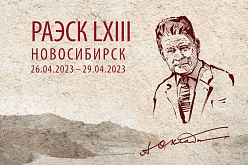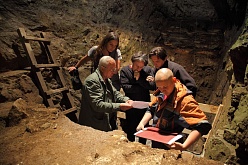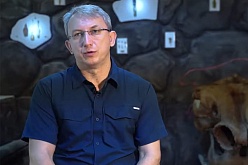Okladnikov Cave
- Description
- Links
- Video
Sibiryachikha Cave is situated near the Sibiryachikha River and a village in the Soloneshenskiy District, Altay Kray. It is easily visible from the road. The cave comprises multiple small halls and grottoes connected by galleries. This location is the easternmost among known Neanderthal sites discovered in Eurasia. Alongside confirmed anthropological remains, Neanderthal-produced tools have also been uncovered within the cave.
It would have been reasonable to assume that the Sibiryachikha Neanderthals are relatives to the Denisova Cave Neanderthals because the distance between the two sites is only about one hundred kilometers. However, a tool assemblage has shown that the closest representatives of this ancient human subspecies are the carriers of the Micoquian Paleolithic culture from Central and Eastern Europe who also inhabited the Crimea and Caucasus. The descendants of this ancient human group traveled far and reached northern Altay 50 ka ago. The tools similar to the ones first found in Altay Sibiryachikha were discovered at several regional archeological sites.

Location: Russia, Altay Kray, Soloneshenskiy District
The archeological studies began in:: Archeological studies began in: The site was discovered in 1982 by A.P. Derevianko (presently, Academician of the RAS) and V.I. Molodin (presently, Academician of the RAS). V.T. Petrin also worked at the cave. A.P. Derevianko and S.V. Markin have fully studied the cave within four years.
Estimated layers age: 44 ka
Human species: Neanderthals
Study history
The Sibiryachikha Cave archeological site was discovered in 1982 by A.P. Derevianko (presently, Academician of the RAS) and V.I. Molodin (presently, Academician of the RAS). V.T. Petrin also worked at the cave. A.P. Derevianko and S.V. Markin have fully studied the cave within four years
The scholars have given it the name of Okladnikov Cave in the memory of Aleksey Okladnikov, the founder of the Institute of History, Philosophy, and Philology of the Siberian branch of the Academy of Sciences of the USSR, a pathbreaker in the Siberian and Far-Eastern archeology, Academician of the Academy of Sciences of the USSR.
The discovered artifacts are now stored in the museum. The researchers continue their work with the artifacts to collect new data, e.g. by genetic testing.
The most well-known finds are:
Stone tools, fragments of skeletons of “Siberian” Neanderthals, which allowed the study of the ancient DNA and even determination of their family ties The remains found at the cave have provided evidence supporting that Neanderthals had lived in Siberia 2,000 km further to the east than it was considered before.
-
The Layer 1 Industry at Okladnikov Cave: New Data. Problems of Archeology, Ethnography, Anthropology of Siberia and Adjacent Territories. 2022 (In Russ.)
-
Bifacial Tools from Okladnikov Cave: Technical and Typological Analysis. Problems of Archeology, Ethnography, Anthropology of Siberia and Adjacent Territories. 2022 (In Russ.)
-
Handling Stone Raw Materials by Representatives of the Sibiryachikha Variant of the Middle Paleolithic in Altay. Archeology, Ethnology, and Anthropology of Eurasia. 2015 (In Russ.)
-
Okladnikov Cave Neanderthals: Habitat and Nutritional Specifics According to the Isotope Analysis. Archeology, Ethnology, and Anthropology of Eurasia. 2013 (In Russ.)
-
Past Dental Evidence from Middle Paleolithic Layers of Altay Caves. Archeology, Ethnology, and Anthropology of Eurasia. 2013





